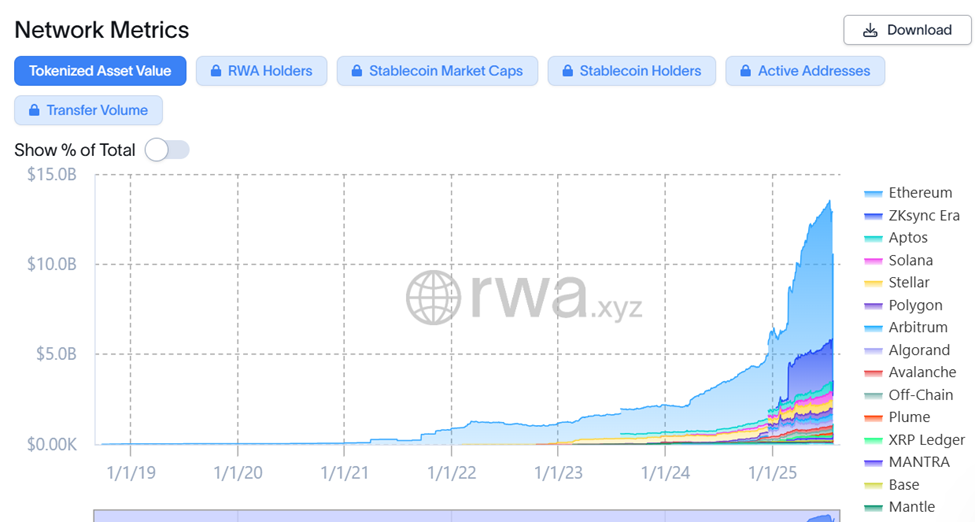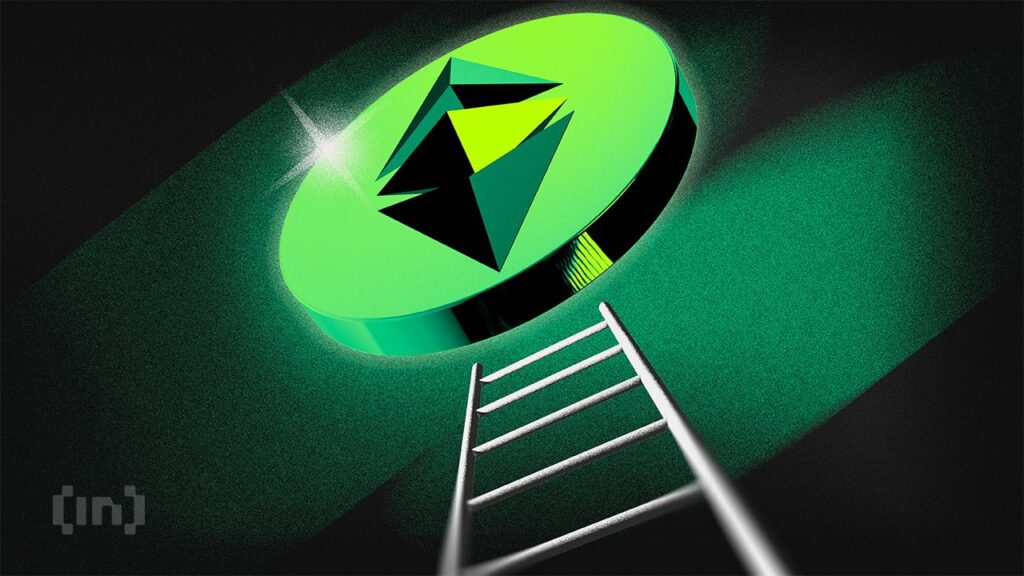Ten years ago, Ethereum launched on the promise to reinvent the internet. Today, it is the engine behind a $75 billion decentralized economy, driving everything from meme coins to multi-billion dollar facility finance.
What began as a white paper by a teenage coder now is the world’s programmable financial backbone. This retrospective traces Ethereum’s critical breakthrough, crisis and transformation, asking the never-sleeping chain what the next decade will look like.
Ethereum Genesis: Building the World’s Computers
The Ethereum story began in 2013, when Vitalik Buterin imagined a much more versatile blockchain than Bitcoin.
Alongside Gavin Wood, Charles Hoskinson, Anthony Di Iorio and Joseph Rubin proposed a decentralized world computer that can run smart contracts and host unreliable applications.
By mid-2014, Ethereum had raised more than $18 million in advance sales. On July 30, 2015, Genesis blocks were mined, marking a new era of blockchain programmership.
Buterin’s Whitepaper introduced smart contracts, a self-executing code that automates contracts without intermediaries. It wasn’t just a technical leap. It was a philosophical shift towards large-scale distributed adjustments.
With only time left to celebrate Ethereum’s 10th anniversary, this history all comes to mind, with co-founder Joseph Lubin among the bearers of the ritual NFT torch.
Dao Hack: Crisis and Folk
Ethereum’s first existential crisis came quickly. In 2016, DAO (early decentralized venture fund) created a $150 million ETH. However, a vulnerability in the smart contract allowed the attacker to suck up 3.6 million ETH.
The community faced a critical question: Should blockchain remain immutable or be rewritten to undo the hack? Meanwhile, TenX CEO Toby Hoenisch has been appointed as the perpetrator.
Controversial hard forks supported by more than 85% of the network reversed the exploit and returned the stolen funds. Those who opposed continued to do the Ethereum Classic (e.g.).
The event reshaped Ethereum culture and revealed the dangers of unnetworked codes. It also proved that Ethereum was more than just a code, but a community, sparking long-term debate over governance.
ICO Boom: Ethereum becomes a fundraising engine
Ironically, DAO’s failure paved the way for Ethereum’s next explosive use case: the early coin product (ICO).
The ERC-20 standard allowed anyone to easily issue tokens in Ethereum. By 2017, projects such as EOS, Tezos, and Bancor had raised billions.
Ethereum has become a decentralized Kickstarter, allowing startups to bypass traditional fundraising routes. However, the Gold Rush attracted scammers and especially the regulatory fires from the SEC (Securities and Exchange Commission).
Still, Ethereum has found a fit in the product market. This was a platform for bootstrapping new economic systems.
Defi Summer: A New Financial Architecture
2020 marked another revolution in Ethereum: Decentralized Finance (Defi). Protocols such as Uniswap, Aave, Compound and Makerdao provided unreliable borrowing, lending, trading and harvest farming. During “Defi Summer,” the total locked amount skyrocketed above $11 billion.
Defi showed the complexity of Ethereum, highlighting how apps can build one another, like LEGO blocks.
However, success also put a strain on the network, and fees have skyrocketed. This price sets small users and highlighted the urgent need for scalability.
However, innovation could not be ignored. Defi demonstrated that Ethereum was not only hosting applications, but also rewriting financial rules.
Merge: From energy pigs to pioneers of efficiency
In September 2022, Ethereum ran a merge and moved from Proof of Work (Pow) to Sportof-Stake (POS). This energy use reduced energy usage by over 99.95% thanks to EIP-1559, and transformed ETH into a deflare set.
It was a historic technical feat. Ethereum replaced the consensus engine in flight, aligning the network with its global sustainability targets.
However, scalability remains close as the next frontier, focusing on Layer 2 (L2) solutions.
After merging: Scaling the payment layer
The Ethereum roadmap evolved after registration. In 2023, Shapella upgrades stopped ETH withdrawals.
In 2024, Dencun (Cancun-Deneb) introduced Protodunk Sharding (EIP-4844), which reduces layer 2 data charges via “Blobs.”
Rollups such as Arbitrum, Optimism, Base matured quickly, with Ethereum’s effective throughput being pushed beyond 250 transactions per second (TPS). The agency took note. Launched in 2024, BlackRock’s Buidl Tokenized Fund will be held at Ethereum.
“Ethereum started as a smart contract platform. Ten years later, it supports an increase in global finance shares, including US ETFs, corporate and DAO’s Treasury ETH, and major institutions like Ethereum’s BlackRock Token funding,” said Risk Lab co-founder.
The recent Pectra upgrade in 2025 featuring EIP-3074 and Verkle Trees will further improve your wallet UX and data processing. This will be the basis for wider adoption and modular blockchain design.
Interoperability is the next big leap
Despite progress scaling, Ethereum’s UX remains fragmented. The transition between L2s is slow, expensive and intimidating for non-professionals.
“The real endgame is simple. A huge payment and exchange network that connects all blockchains. If most assets are tokenized (stocks, bonds, real-world assets) become all valuable settlements and payment layers on the Internet,” explained Lambur.
In particular, this vision relies on interoperability UX resolution. Ethereum is currently expandable (thanks to the L2S). But this broke the experience. Moving between chains is clunky and expensive.
“We’ve fixed that and Ethereum feels like one unified network again. We’ll show you the original promise,” added the Risk Lab executive.
The next battlefield thinks that the chain is an economy where the competition is for liquidity, just as banks compete for deposits.
“Loyalty programs, rebates and incentives to keep user assets on the chain,” he said.
This shift could reconstruct defi economics and accelerate the rise of multi-chain but Ethereum-established ecosystems.
Shaping the code landscape
As they reached the 10th anniversary, Ethereum has done more than survive. It fueled defi, the pioneer of smart contracts, in the age of digital assets, and created NFTs, and laid the foundation for DAOs.
Its global developer community, 100% uptime and persistent adaptability is more than just a blockchain, it is a decentralized internet infrastructure.
According to Lambur, the interoperability goals are pretty obvious. Users should be able to instantly move and exchange assets from any chain to other assets on other chains at low cost.
This unlocks the network effects of tokenized assets and lays the foundation for the next decade of Ethereum.
From hacked Dao to Wall Street’s multi-million-dollar tokenized fund market, Ethereum’s trajectory is nothing short of epic.

If Bitcoin is digital gold, Ethereum is the basis of Web3, and this is more than just resilience. It’s growth.
Disclaimer
Following Trust Project guidelines, this feature article presents the opinions and perspectives of industry experts or individuals. Although Beincrypto is dedicated to transparent reporting, the views expressed in this article do not necessarily reflect the views of Beincrypto or its staff. Readers should independently verify the information and consult with experts before making decisions based on this content. Please note that our terms and conditions, privacy policy and disclaimer have been updated.

